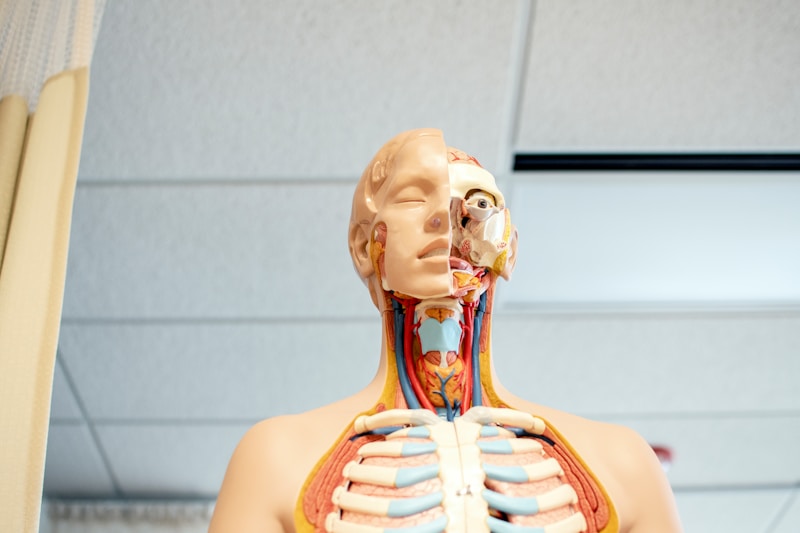10 Questions
What is the term for the increase in the number of individual cells or organisms?
Reproduction
What is the term for chemicals used by organisms to meet energy needs and build cellular structures?
Nutrients
What is the term for organisms that utilize an inorganic source of carbon (e.g., carbon dioxide) as their sole carbon source?
Autotrophs
What is the term for the conversion of atmospheric nitrogen into ammonia by certain bacteria?
Nitrogen Fixation
What is the term for enzymes that degrade cellulose into free sugars?
Cellulases
What is the primary function of superoxide dismutases in aerobic organisms?
To detoxify superoxide radicals
Which type of organism is susceptible to hydrogen peroxide due to the lack of catalase and peroxidase?
Obligate anaerobes
What is the primary function of antioxidants in cells?
To reduce toxic oxygen products
What is the primary source of nutrition for heterotrophs?
Organic compounds
Which type of organism is Helicobacter pylori, an ulcer-causing pathogen?
Microaerophile
Study Notes
Metabolism and Energy
- Chemical reactions within cells are essential for all living things and involve energy needs and building cellular structures.
- Energy sources include chemicals, light, and inorganic and organic compounds.
Nutrients and Elements
- Nutrients are chemicals used by organisms to meet energy needs and build cellular structures.
- Carbon is an essential element for microbial growth and reproduction.
- Hydrogen is a common element in cells essential for redox reactions and electron transfer.
- Phosphorus is essential for phospholipid membranes, DNA, and ATP.
- Sulfur is critical for disulfide bonds in proteins and some vitamins.
- Trace elements are required in very small amounts for growth.
Organisms and Classification
- Heterotrophs are organisms that catabolize organic molecules acquired from other organisms.
- Chemotrophs are organisms that acquire energy from redox reactions involving inorganic and organic chemicals.
- Phototrophs are organisms that use light as an energy source.
- Autotrophs are organisms that utilize an inorganic source of carbon (e.g., carbon dioxide) as their sole carbon source.
- Photoautotrophs use light as an energy source and carbon dioxide as a carbon source.
- Chemoautotrophs use inorganic chemicals as an energy source and carbon dioxide as a carbon source.
- Photoheterotrophs use light as an energy source and organic compounds as a carbon source.
- Chemoheterotrophs use organic compounds as both an energy and carbon source.
- Organotrophs acquire electrons from organic molecules.
- Lithotrophs utilize electrons from inorganic molecules.
Microbial Growth and Requirements
- Microbial growth requires consideration of chemical, physical, and energy needs.
- Anaerobes are organisms that grow without oxygen.
- Aerobes are organisms that require oxygen for growth.
- Facultative anaerobes are organisms that can grow with or without oxygen.
- Microaerophiles are organisms that require reduced levels of oxygen for growth.
- Obligate anaerobes are organisms lacking catalase and peroxidase, susceptible to hydrogen peroxide.
Oxygen Toxicity and Defense
- Oxygen toxicity refers to the harmful effects of singlet oxygen, superoxide radical, peroxide anion, and hydroxyl radical on organisms.
- Catalase and peroxidase are enzymes that detoxify hydrogen peroxide.
- Superoxide dismutases are enzymes that detoxify superoxide radicals in aerobic organisms.
- Antioxidants are substances that reduce toxic oxygen products.
Nitrogen Fixation and Biofuels
- Nitrogen fixation is the conversion of atmospheric nitrogen into ammonia by certain bacteria.
- Biofuels are fuels derived from metabolic activity converting sugars into ethanol or butanol.
Genetic Engineering and Cellulose
- Genetic engineering involves manipulating an organism's genes to express desired traits.
- Cellulose is a polymer of glucose composing the majority of plant cell wall material.
- Cellulases are enzymes that degrade cellulose into free sugars.
Explore the fundamental concepts of microbiology, including cellular processes, growth, and nutrition.
Make Your Own Quizzes and Flashcards
Convert your notes into interactive study material.
Get started for free



